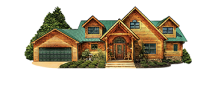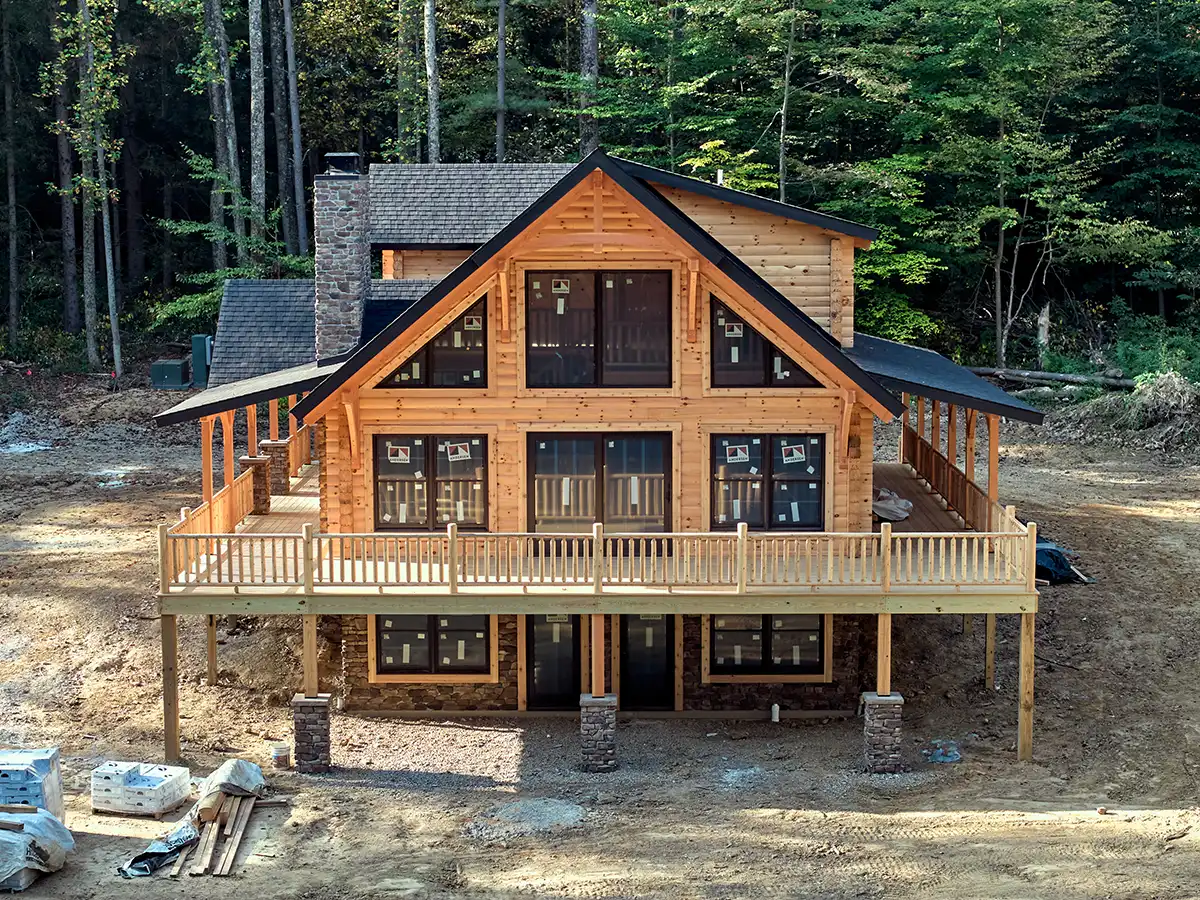A log home dream is just that – a dream – until the time comes to pay for it. Buyers who want to finance a log home project usually apply for a construction loan. One of the lenders that’s deeply experienced with serving log home buyers is First Federal Community Bank of Bucyrus. To help demystify the loan process, the bank’s senior loan officer, Tim Adams, explains the basics of construction lending and what he believes makes log homes stand out.
Types of Construction Loans
People who plan to build a new home can choose from single-close or two-time close loans. While it streamlines the process, the single-close (or “construction to permanent”) loan can cost a bit more when it comes to locking in a long-term rate for the “permanent” or ongoing portion of the loan, Adams says. With a two-time close, it’s possible that interest rates may be lower when the home is completed and ready for the ongoing mortgage.
Construction Loan Details
Construction loans differ from conventional mortgages for already-built houses in several ways. Construction loans require interest-only payments and are written for 12 months. “If more time is needed,” Adams says, “we can do an extension of the terms.” A construction loan is not permanent financing: It’s a short-term loan that allows for a house to be built. Construction loan interest rates are a little bit higher, Adams says, because they represent a higher risk to the lender. It is possible to obtain a loan that covers both the cost of land and the home construction costs. If a buyer doesn’t have the necessary funds for a down payment, some lenders will offer a bridge loan to finance 100% of land purchase and construction costs. This loan works well for buyers who already own a home that plan to sell when the new home is complete. The proceeds from that sale will go toward paying down the bridge loan balance.
What do you need to qualify for a construction loan?
Qualifying for a construction loan is very similar to qualifying for a conventional mortgage. Adams says his bank looks for established credit, good income, the right debt ratio, suitable down payment funds, good assets, and a favorable loan-to-value ratio for the project. When it’s time to apply for the loan, log home buyers should provide a contract from the log package provider that includes the total cost of materials, a construction cost breakdown from a qualified builder and construction documents like elevations and floor plans. The bank will use this background material to have the project appraised. Adams notes that these appraisals are based on comparable area sales. Building a log home in an area that has other similar log homes that people have built or purchased can make the appraisal process smoother.
Log Homes vs Tract Homes
Construction loans for tract (or production) homes and more customized homes, like log homes are similar: There’s no difference in lending fees or interest rates, and it doesn’t take any longer to obtain a log home loan than a loan for a stick-built house. The difference, Adams says, is in the final product, especially with the Hochstetler Log Homes his team has financed over the years. “The quality speaks for itself,” he says. “They take deep pride in their work.”
Local Lender or Large Institution?
Many log home buyers look to local or smaller banks for their construction loans. One advantage Adams notes is the user-friendliness of a bank like his. “It doesn’t get much easier for a customer or a builder to get their job done, reviewed, approved, built, and funded. There are not a lot of phone calls or jumping through hoops,” he says. “It’s a well-oiled machine when it comes to doing construction loans with The Adams Team at First Federal Community Bank of Bucyrus.”









